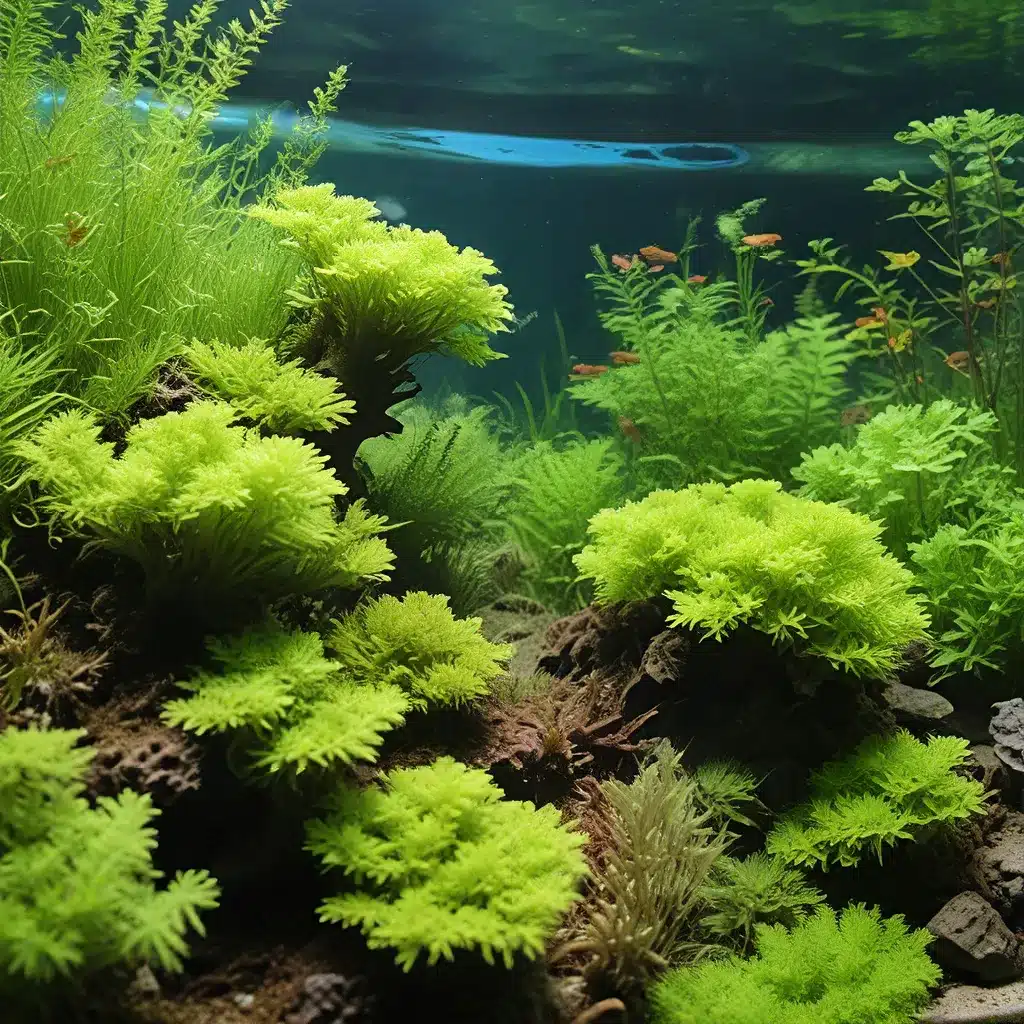
Maintaining a Healthy Aquatic Environment
Aquarium enthusiasts often face the persistent challenge of managing algae blooms, which can disrupt the delicate balance of their underwater habitats. Whether you’re a seasoned hobbyist or just starting your aquarium journey, understanding the nature of these microscopic invaders and implementing strategic control measures are crucial for ensuring the long-term health and vibrancy of your aquatic ecosystem.
At the heart of this issue lies cyanobacteria, often mistakenly referred to as “blue-green algae.” These photosynthetic bacteria have a remarkable ability to thrive under various conditions, making them a persistent threat in aquariums. Unlike true algae, cyanobacteria can create unsightly mat-like formations that cover substrates, decorations, and even your beloved aquatic plants. Identifying and addressing cyanobacteria infestations is the first step toward restoring the balance in your aquarium.
Identifying and Understanding Cyanobacteria
Cyanobacteria can often be distinguished from other types of algae by their distinctive slimy, mat-like appearance, which can range in color from green to black. These organisms thrive in areas with low water flow, and their presence is typically indicative of excessive nutrients, such as nitrates and phosphates, in the aquarium. By recognizing the early signs of a cyanobacteria bloom, you can take proactive measures to prevent it from spiraling out of control and disrupting the overall health of your aquatic ecosystem.
Preventing Cyanobacteria Blooms
Effective prevention is the key to maintaining a balanced and thriving aquarium. By addressing the underlying factors that contribute to cyanobacteria growth, you can create an environment that is less conducive to their proliferation. Here are some essential strategies to consider:
Maintain Optimal Water Quality
Consistent water changes and efficient filtration are fundamental for controlling nutrient levels and maintaining optimal water quality. Regularly removing waste, excess food, and decaying plant matter can significantly reduce the available nutrients that cyanobacteria feed on, making it harder for them to establish a stronghold in your aquarium.
Manage Lighting Carefully
Striking the right balance of lighting is crucial, as cyanobacteria thrive in conditions with excessive illumination. Adjust the duration and intensity of your aquarium’s lighting to create an environment that supports the growth of your aquatic plants while inhibiting the spread of cyanobacteria. Utilize timers and choose the appropriate light spectrum to ensure a healthy, balanced ecosystem.
Incorporate Aquarium Plants
The presence of thriving aquatic plants can be a powerful ally in the battle against cyanobacteria. These living, green organisms actively compete for nutrients, effectively starving the cyanobacteria of the resources they need to proliferate. By cultivating a lush and diverse plant population, you can create a more stable and resilient aquarium environment.
Maintain Optimal CO2 Levels
For planted aquariums, supplementing with CO2 can significantly boost plant growth, enabling them to outcompete cyanobacteria for essential nutrients. However, it’s crucial to carefully monitor and balance CO2 levels to avoid creating conditions that could inadvertently favor the growth of these unwanted bacteria.
Leverage Beneficial Bacteria
Introducing beneficial bacteria into your aquarium can be a natural and effective way to combat cyanobacteria blooms. These microorganisms compete with cyanobacteria for resources, helping to restore the natural balance of your aquatic ecosystem. By supporting the growth of beneficial bacteria, you can create an environment that is less conducive to cyanobacteria proliferation.
Manual Removal and Integrated Strategies
While preventive measures are essential, there may be instances where cyanobacteria blooms become too severe to manage through environmental controls alone. In such cases, a more hands-on approach may be necessary.
Manual Removal
Physically siphoning and vacuuming the substrate, as well as manually removing cyanobacteria from surfaces, can provide immediate relief. This method, when combined with improvements to filtration and water quality, can be an effective way to regain control over a stubborn cyanobacteria outbreak.
Targeted Chemical Treatments
As a last resort, the judicious use of specific algaecides or antibiotics designed for aquarium use may be necessary to combat severe cyanobacteria infestations. However, it’s crucial to follow the manufacturer’s instructions carefully and consider the impact on your aquarium’s inhabitants and biological filtration system.
By integrating a comprehensive strategy that encompasses preventive measures, manual removal, and targeted chemical treatments (if required), you can effectively combat cyanobacteria blooms and maintain a thriving, visually appealing aquarium that delights both you and your aquatic inhabitants.
The Role of Aquarium Maintenance
Consistent and diligent aquarium maintenance is the foundation for long-term success in managing cyanobacteria and other algae issues. Regular water changes, filter cleanings, and plant pruning are essential practices that help maintain optimal water quality and nutrient balance, creating an environment that is less susceptible to algae overgrowth.
Seeking Professional Guidance
In some cases, the complexity of an aquarium’s ecosystem or the severity of a cyanobacteria outbreak may warrant the expertise of a professional aquarium maintenance service or specialist. These experts can provide tailored solutions, identify underlying issues, and recommend specific treatments to restore the health and balance of your aquatic environment.
By combining your own efforts with the guidance of experienced professionals, you can ensure the long-term success of your aquarium and create a vibrant, thriving habitat that is a joy to behold. Explore the resources at King Aquarium to learn more about effective strategies for combating algae blooms and maintaining a healthy, balanced ecosystem.

